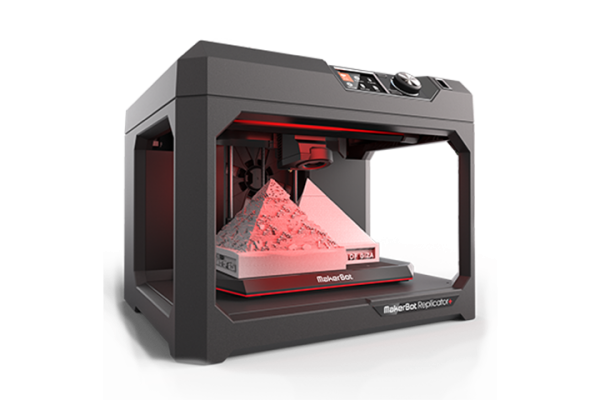The AudioCodes Mediant is a very good single board computer for people who want to build their own embedded systems. The device has an ARM Cortex A8 processor with NEON and Mali graphics, 2GB RAM, 32GB eMMC flash storage, WiFi, Bluetooth 4.0, HDMI out, USB 3.0 host, Gigabit Ethernet, 10/100/1000 Mbps Ethernet, and more.
Installing AudioCodes Mediant VE SBC on Hyper-V
When I first got my hands on the new AudioCodes Mediant VE board, I was eager to test it out. My first task was to set up Hyper-V in Windows 8.1 or later on my laptop so that I could create a virtual machine (VM) on which I would install the AudioCodes Mediant VE SBC or AudioCodes Mediant 2000 SS7
I used a free trial of VMware Workstation 11 Pro to do this task. You can download the free version of the software directly from VMware’s website. It does not require a license key, nor will it expire.
Downloading the software is as simple as going to its official website and clicking “Download”. When you click the link, you are taken to the software download page where you can choose between downloading either the Standard Edition or the Professional Edition.
Once you have downloaded the software, you can run it, but if you want to see how it looks like, you will need to install it first. To start the installation process, double-click the setup file, and when the program starts running, follow these steps:
- Click Install Now.
- In the Select Components screen, check all the components except Windows Embedded CE 6.5 SP3.
- In the Specify Installation Destination window, accept the default values by clicking OK.
- After accepting the defaults, select Customize Setup to see the options to select.
- Select the Advanced option and then click Next.
- In the next screen, leave everything blank except for the location of your product key, if applicable. Then click Next.
- You should now be at the Ready To Install screen.
- Click Next to continue the installation of your new software.

You might get a message telling you about Windows Updates being available. Click Yes to update your operating system. If you don’t want to install them, click No.
At the end of the installation, you will see an End Of Installation screen.
Once you’re done installing the software, just restart your PC and follow the next step to create the new VM.
Note that you may have to wait for a while before the installation finishes, depending on the speed of your internet connection and the size of your hard drive. If you have several hard drives connected to your computer or have a fast internet connection, you might be able to install the software faster than me.
If you followed my instructions and installed the software successfully, your computer will automatically open VMware Player after you have rebooted it. Once inside VMware, click New Virtual Machine to create a new virtual machine (VM).
On the New Virtual Machine screen, select Create a New Disk Image File. Select the appropriate type of disk image based upon what kind of hardware you plan on using and the amount of memory it has. For example, a disk image file for a low-end Android smartphone would use a CompactFlash card with only 512MB of memory. For a desktop PC, however, a large hard disk with lots of memory and storage space is required.
For the AudioCodes Mediant, I chose to create a 1 GB disk image file. This isn’t too small since most computers today come with larger storage devices than this. However, some older computers might still have smaller storage devices attached, and this is why you should always make sure to select a disk image file that fits your particular needs.
Next, choose the type of virtual hardware configuration you want to use — Intel x86 or AMD 64-bit architecture, 32-bit or 64-bit OS, Linux kernel 3.10 or greater, and so on. Choose whatever suits your needs best.
Make note of the name of your newly created virtual machine, because you will need it when you start setting up the AudioCodes Mediant VE SBC.
Now that you’ve created your new virtual machine, you can proceed to configure it, and the first thing you’ll want to do is enable network connectivity. Follow these steps to accomplish this task:
- Click Start, search for Network and Sharing Center, right-click, and then click Connect to a network.
- Under Server Types, expand Wireless and then select Other Wireless Networks.
- In the list of wireless networks, select the one that corresponds to your local area network.
- Click Properties.
- In the General tab, change the following settings:
- Choose WPA Personal or WEP 128 bit
- Keep Automatic login checked
- Leave Password Auto Generated unchecked
- You can also change the IP address range of your virtual machine in the same section.
- Next, click the LAN Settings button under the Network & Internet header.
- Check the Enable networking box and enter the IP address of your virtual machine as well as the subnet mask.
- Under Host Name, type the name of your virtual machine, and select Apply.
- Click Finish.
- After configuring your new virtual machine, go ahead and select the Start menu and click Run to launch the command prompt.
- Type ipconfig /all, press Enter, and look for the Default Gateway column.
- Right-click it, and then click Edit Route List.
- Go to the bottom of the list and find the entry labeled 0.0.0.0.
- Remove the leading zero, and then delete it from the other entries. Do this by selecting each line separately and then pressing Delete.
- Save your changes, close the command prompt, and exit VMware Player.
- Return back to the VMware Player application, and then click Start.
- Enter the name of your virtual machine into the search bar and click Launch.
- Follow the onscreen instructions to log into your virtual machine.

You can now connect to the Internet via the Ethernet port of your AudioCodes Mediant VE SBC. Just plug your modem or router into the RJ45 jack, turn on the power switch, and then plug both cables into the respective ports. After doing this, your computer will automatically detect the presence of a network adapter and ask you whether you want to configure it. Click OK.
To finish the installation process, click Continue, then follow the next steps:
- Under Device Drivers, scroll down until you find the Audio Codecs driver, click it, and then click Install.
- Follow the prompts to complete the installation process.
- When you’re finished, you can disconnect your modem or router from your computer, unplug the power cable, and shut down your device.
When you’re ready to boot up your AudioCodes Mediant VE SBC, just hold the power button for a few seconds and release it. Your device will boot up, and if everything went fine, you’ll see a blue screen indicating the successful completion of the installation procedure.
With this method of getting started, you should be able to install the AudioCodes Mediant VE SBC onto your Hyper-V virtual machines. I hope this guide helped you learn how to do it, and please let us know if you succeeded!





































